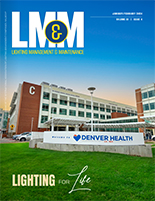ALPHARETTA, GA, Jul 23, 2014 (Marketwired via COMTEX) — Bright Light Systems, a leading manufacturer of Light Emitting Plasma (LEP) luminaires, LED luminaires and wireless lighting controls, today announced the completion of a major lighting retrofit project for the U. S. Naval Station in Everett, Washington.
Naval Station Everett, home to the nuclear powered aircraft carrier USS Nimitz and other navy ships, is one of a few U.S. Navy ports that can accommodate an aircraft carrier. The extensive pier and wharf area of the naval station supports 74 high mast fixtures across 11 poles that are 80 feet tall. Since the opening of the port in 1993, the high mast lighting consisted of traditional 1000W high pressure sodium lamps. “It was time to provide a brighter and safer work area for our personnel, as well as take advantage of new lighting technology to save energy,” says Ray Smalling, PE, Naval Station Everett Installation Energy Manager. “Our 1.2 footcandle readings were below standard, maintenance costs were rising, and we were Dark Sky non-compliant to the point where we were interfering with fish passage in the channel.”
U.S. Navy Unified Facilities Criteria calls for an average of 3 footcandles on piers and wharfs, and Smalling evaluated luminaires from three LED manufacturers, and a Light Emitting Plasma (LEP) luminaire from Bright Light Systems. The only fixture that met the illuminance criteria and coverage, as well as the required payback criteria, was the 540W BLP1000 from Bright Light Systems.
“Our LEP high mast solution provides a brighter, better quality light for ports and marine terminal applications, and Naval Station Everett expects to save at least $16,000 per year on maintenance costs alone,” said Brad Lurie, President of Bright Light Systems. “We are very pleased to have met and exceeded the U.S. Navy specifications while reducing their energy costs by 50% and total shore power consumption by 1%. LED technology is not the only cost-effective option these days, and we’ve proven our unique LEP technology, with a rated lamp life of 50,000 hours, offers superior performance in a variety of industrial settings.”



